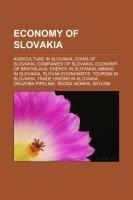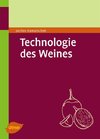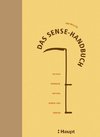
Economy of Slovakia
Source: Wikipedia. Pages: 33. Chapters: Agriculture in Slovakia, Coins of Slovakia, Companies of Slovakia, Economy of Bratislava, Energy in Slovakia, Mining in Slovakia, Slovak economists, Tourism in Slovakia, Trade unions in Slovakia, Druzhba pipeline,... Viac o knihe
Produkt je dočasne nedostupný
14.43 €
bežná cena: 16.40 €
O knihe
Source: Wikipedia. Pages: 33. Chapters: Agriculture in Slovakia, Coins of Slovakia, Companies of Slovakia, Economy of Bratislava, Energy in Slovakia, Mining in Slovakia, Slovak economists, Tourism in Slovakia, Trade unions in Slovakia, Druzhba pipeline, skoda Works, Skylink, Slovak euro coins, Slovak koruna, Agriculture in Communist Czechoslovakia, ORCO, ESET, SARIO, 2009 Handlová mine blast, Coins of the Slovak koruna, Meopta, Elnec, Ivan Klinec, Tatra Tiger, Upper Váh region, Matador, Zamagurie, List of tourism regions of Slovakia, Confederation of Trade Unions of the Slovak Republic, Ski and winter sports in Slovakia, Hotel Gate One Bratislava, List of companies of Slovakia, Slovalco, Bratislava Stock Exchange, ZTS OSOS, Slovak University of Agriculture, Ján Pociatek, Livia Klausová, Cestné a Stavebné Mechanizmy Tisovec, Independent Christian Trade Unions of Slovakia, I.D.C. Holding, SEESAME Communication Experts, Zlatý Bazant, Trnavské automobilové závody, International rankings of Slovakia, Slovenská poSta, Doprastav, Hrebienok, List of supermarket chains in Slovakia, Vagónka. Excerpt: Slovakia's economy increasingly resembles that of a so-called developed country. With the highest sustained GDP growth in the European Union, reporting 10.4% in 2007 and the highest rating from V4 countries, the Slovak economy has been considered a tiger economy known as the Tatra Tiger. Slovakia has been an EU member state since 2004 and adopted the euro currency at the beginning of 2009. Its capital, Bratislava, is the largest financial centre in Slovakia. Unemployment has fallen considerably, although long-term unemployment remains high. In the long term, improving education outcomes, including by reducing the impact of socioeconomic background on outcomes, will be central to sustaining high economic growth and social cohesion. GDP per capita at purchasing power parity was EUR18,100 in 2008, which was 72% of the EU average. Since the establishment of the Slovak Republic in January 1993, Slovakia has undergone a transition from a centrally planned economy to a free market economy, a process which some observers believe was slowed in the 1994-98 period due to the crony capitalism and other fiscal policies of Prime Minister Vladimír Meciar's government. While economic growth and other fundamentals improved steadily during Meciar's term, public and private debt and trade deficits also rose, and privatization was uneven. Real annual GDP growth peaked at 6.5% in 1995 but declined to 1.3% in 1999. Two governments of the "liberal-conservative" Prime Minister MikuláS Dzurinda (1998-2006) pursued policies of macroeconomic stabilization and market-oriented structural reforms. Nearly the entire economy has now been privatizatized, and foreign investment has picked up. Economic growth exceeded expectations in the early 2000s, despite recession in key export markets. In 2001 policies of macroeconomic stabilization and structural reform led to spiraling unemployment. Unemployment peaked at 19.2% (Eurostat regional indicators) in 2001 and though it has fallen to (depending on the
- Vydavateľstvo: Books LLC, Reference Series
- Formát: Paperback
- Jazyk:
- ISBN: 9781156994504


 Nemecký jazyk
Nemecký jazyk 









